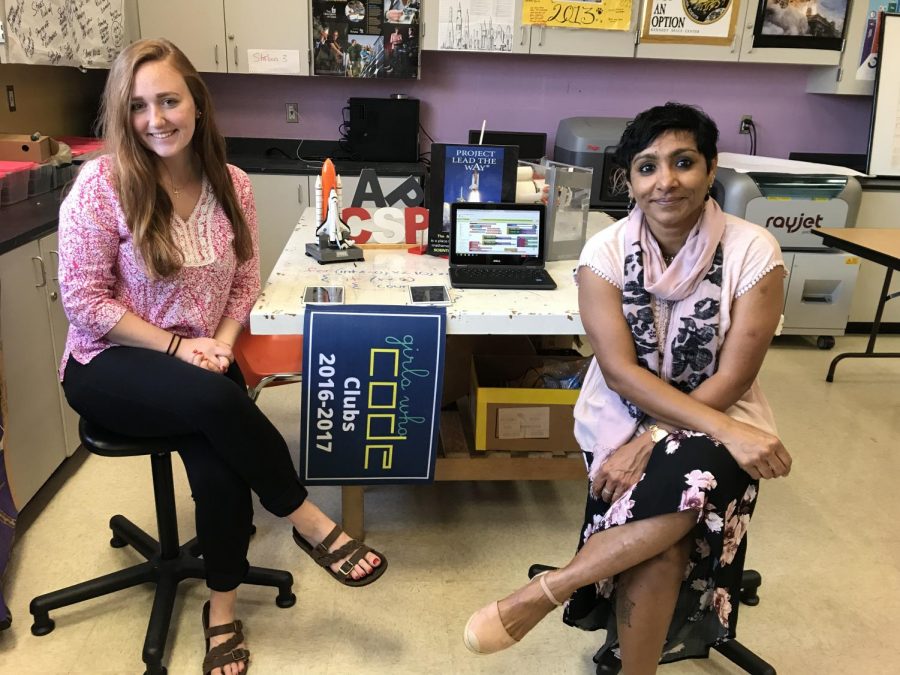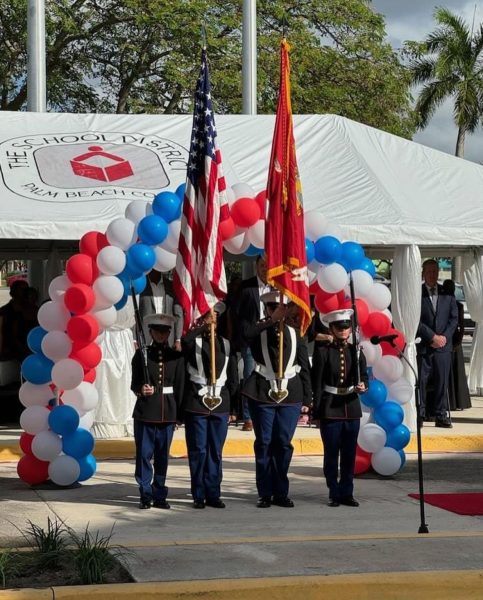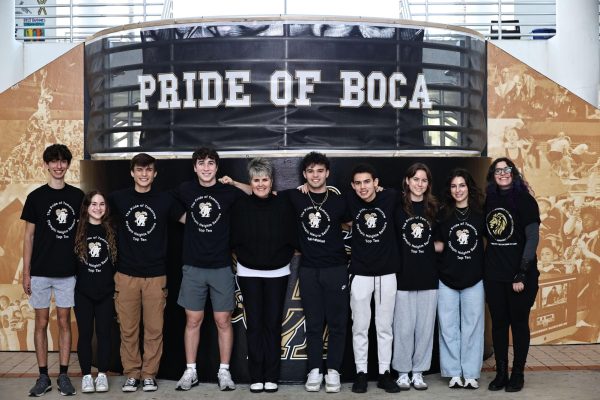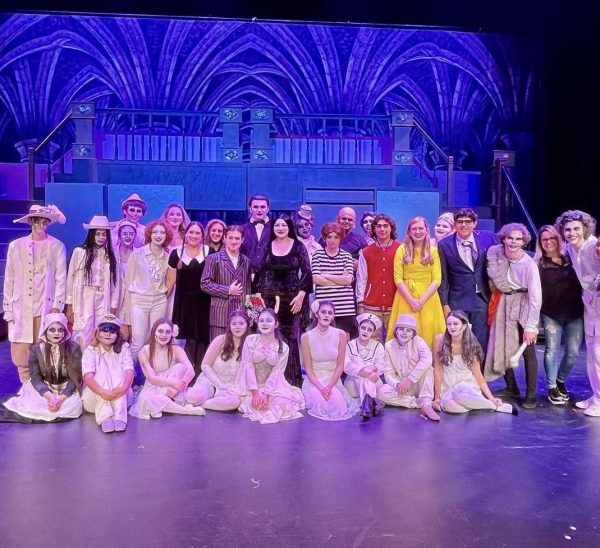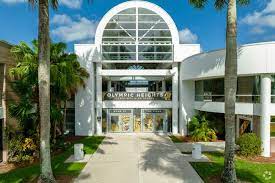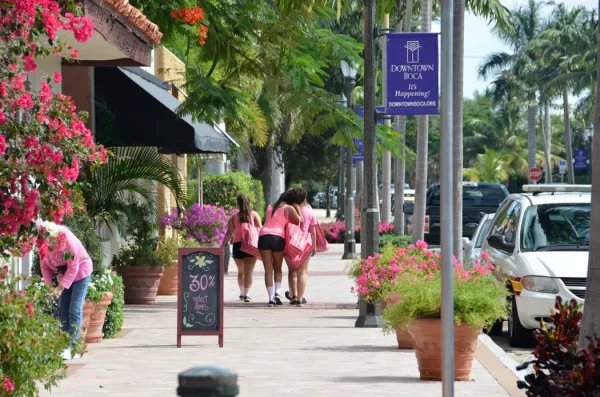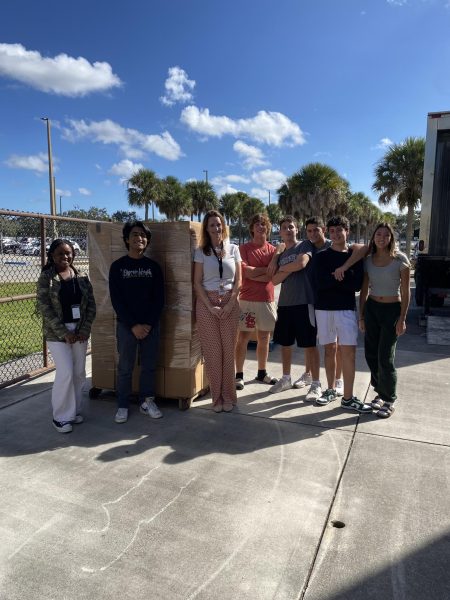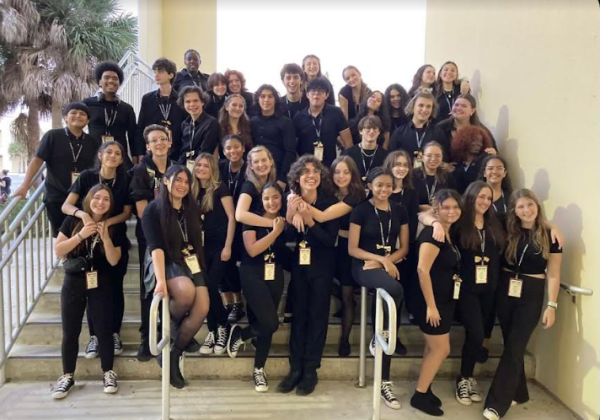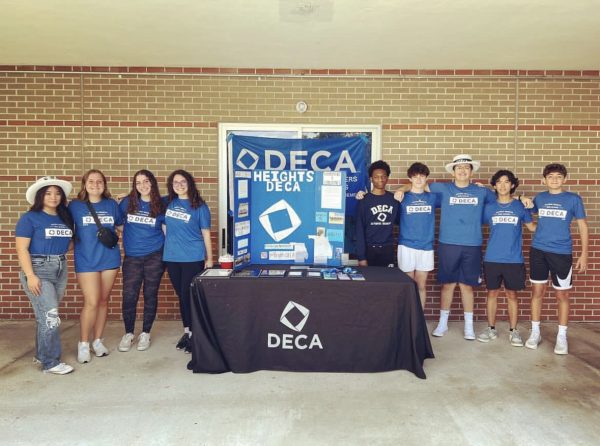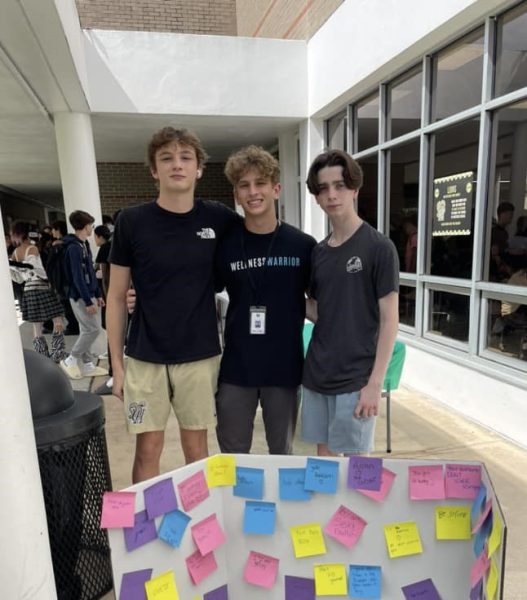Olympic Heights’ Kaylee Cunningham Advances to International Science and Engineering Fair
Kaylee Cunningham (left) will be advancing to the International Science and Engineering Fair and, along with her engineering teacher Ms. Nimmi (right), was recently honored by the National Center for Women & Information Technology.
Even though the end of the school year is just weeks away, one of the best and brightest of Olympic Heights, senior Kaylee Cunningham, keeps showing her Lion pride, this time by winning first place at the Palm Beach Regional Science and Engineering Fair and second at the Florida State Science and Engineering Fair with her development of a bra designed to resist radiation penetration thereby reducing the risk of breast cancer.
However, the second place showing at the state level isn’t the end of the road for Cunningham and her project. Next month, she is headed to the Intel International Science and Engineering Fair in Pittsburgh. After finding out about qualifying for the international competition, Cunningham said, “I can’t believe I’m headed there. It’s unreal. Only 1,800 projects in the world qualify to go.”
Additionally, Cunningham has been named a 2018 Florida: South Florida Affiliate Winner of the NCWIT (National Center for Women & Information Technology) Award for Aspirations in Computing. She was chosen because of her computing-related aspirations and achievements, and for her leadership ability, academic performance, and future plans in the field. She joins almost 2,500 other young women from all over the United States, Puerto Rico, the U.S. Virgin Islands and Guam honored at the regional Affiliate level.
It is no coincidence that Cunningham’s long time OH Engineering Academy teacher Ms. Nimmi Arunachalam was named a winner of the 2018 Florida: South Florida Affiliate NCWIT Aspirations in Computing Educator Award. Ms. Nimmi joins 125 other educators from all over the U.S. and Puerto Rico honored at the regional affiliate level.
Cunningham’s Science and Engineering Fair project is a small step in the continuing battle against cancer. It is important to understand that cancer is not a disease or a virus; one cannot “catch” cancer. Rather, cancer is an improper mutation of a body’s cells. Cellular mutation is not uncommon; it happens from generation to generation and is constantly occurring in one’s body.
However, the fault in a cancer cell mutation is that cancer cells are not built to stop developing. For example, when a baby is developing, there are specific cells to form the arm. Once an arm has been formed, those cells receive a chemical message to stop growing and duplicating. However, in a cancer cell, that chemical message is never delivered, leading to the uncontrollable duplication of cancer cells. The cancer cells subsequently take cellular resources, such as important sugars and proteins, and use them for their own purposes.
Additionally, cancer cells are hard for the immune system to detect as they are made of the same “stuff” as regular body cells. This amalgamation of conditions and abilities makes cancer a mysterious and difficult condition that doctors and researchers alike have been grappling with for decades.
One of the main causes of cancer is radiation exposure, such as over-exposure to sun rays, which is the focus of Cunningham’s science project. Her ingenuity was in full force, as she was able to develop a bra that is designed to resist radiation penetration. She did this by “coating unidirectional carbon fiber fabric in carbon nanotube epoxy.” In layman’s terms, she coated a carbon-lined fabric with thin tubes of carbon, no wider than 10,000 times smaller a human hair. Cunningham then used a Geiger counter, a device used to measure radiation levels, to test the effectiveness of her new material by altering the levels of radiation applied to her material. Then, she “sewed a sports bra with the material layered in the padding” in hopes of preventing radiation penetration and “ultimately breast cancer.”
Cunningham says she has “always been intrigued by radiation studies.” Before fashioning her radiation-resistant bra, Cunningham also attempted to “design a mask to prevent inhaling radon gas.” Radon gas is a leading cause of lung cancer, but according to Cunningham, “the material I made just didn’t fit [the mask], so I came up with the idea for the bra.”
Cunningham doesn’t plan on resting after the Intel International Science and Engineering Fair: “I’m currently working on my application for a provisional patent (giving a design the label “patent pending”), and after internationals I’m hoping to delve into the business world to start marketing and selling my bras.”
Cunningham has clearly established herself in the local and science communities, and the Olympic Heights community couldn’t be more proud of her.


